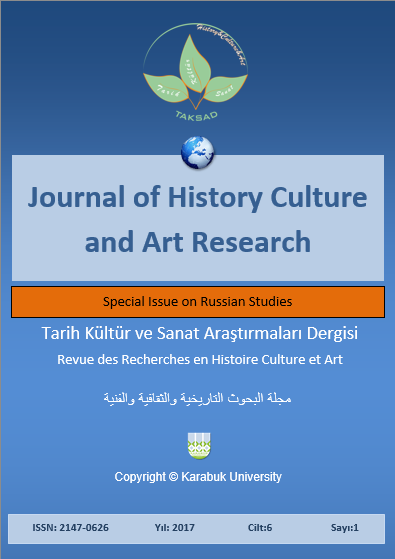Postdramatic Theatre of Director Christoph Marthaler
DOI:
https://doi.org/10.7596/taksad.v6i5.1292Keywords:
Postdramatic theatre, Performance, Synthesis of arts, Christoph Marthaler.Abstract
The present paper deals with the main tendencies of modern European theatre represented in the creativity of a famous Swiss director Christoph Marthaler. Drama and theatre of the end of the 20th – the beginning of the 21st century were exposed to radical transformation. This change has been reflected in the theory of postdramatic theatre. A contemporary theatre is becoming more visual. Nowadays natural theatrical synthesis of various arts – visual, plastic, verbal, musical becomes an intersection of all kinds of artistic and medial practices as it has never been before. The new drama and theatre decline mimesis as the main principle of attitude to reality, they do not depict and do not reflect life, but strive to create a magic and/or ritual space of performative living and a special type of communication with audience. These peculiarities of modern theatre get a vivid evocation in the works of Christoph Marthaler. Having entered into theatre from music, the director creates his own unique language of art. The article proves that Marthaler’s works are an individual model of postdramatic theatre. The author concludes that its main distinctive feature is to blur the border between musical and dramatic performance. Marthaler does not stage the play – the images appear from musical phrases, fleeting impressions, observations and dramatic improvisations. The analysis enables to claim that the theatre in a real process of performance replaces the mimetic acting today. The applied principles of drama analysis can be used in studying of the other contemporary postdramatic theatre’s models.
References
Glossary of Modern Dramatic Art (2016). Postdramatic Theatre (pp. 57-61). Mirgorod. Suplement 1. Lausanne-Siedlce.
Lehmann, H. Th. (2001). Postdramatisches Theater. Frankfurt am Main: Verlag der Autoren.
Lehmann, H. Th. (2013). Postdramatic Theatre. Мoscow: ABC design.
Marthaler, C. (2017). Christoph Marthaler web page. URL: http://christophmarthaler.ch/
Marthaler, C. (2017). Murx den Europäer! Murx Ihn! Murx Ihn! Murx Ihn! Murx Ihn ab! URL: http://www.volksbuehne.adk.de/praxis/murx_den_europaeer/
Prokhorova, T. & Shamina, V. (2014). School for Democracy: Interactive Theater in Soviet and Post-Soviet Russia. Comparative Drama, 48(1-2, 59-73.
Schaper, R. (2003). Triumph der Trance. Der Tagesspiegel. URL: http://www.tagesspiegel.de/kultur/triumph-der-trance/381158.html
Schröder, J. (2006). Postdramatisches Theater Oder Neuer Realismus? Drama und Theater der Neunziger Jahre. Geschichte der deutschen Literatur von 1945 bis zur Gegenwart. Hrsg. Wilfried Barner. München: Verlag C.H.Beck.
Zavyalova, V. & Shamina, V. (2016). Post-Perestroyka Challenges in Russian Political Drama. International Journal of Humanities and Culture, Special Issue, July, 682-687.
Zueva, E.; Shamina, V. & Nesmelova, O. (2016). Russian and Western Productions of The Merchant of Venice: Some Problems of Staging. The Turkish Online Journal of Design, Art and Communication, November, Special Edition, 2415-2420.
Downloads
Published
How to Cite
Issue
Section
License
All papers licensed under Creative Commons 4.0 CC-BY.- Share — copy and redistribute the material in any medium or format
- Adapt — remix, transform, and build upon the material for any purpose, even commercially.
Under the following terms:
Attribution — You must give appropriate credit, provide a link to the license, and indicate if changes were made. You may do so in any reasonable manner, but not in any way that suggests the licensor endorses you or your use.
- No additional restrictions — You may not apply legal terms or technological measures that legally restrict others from doing anything the license permits.







